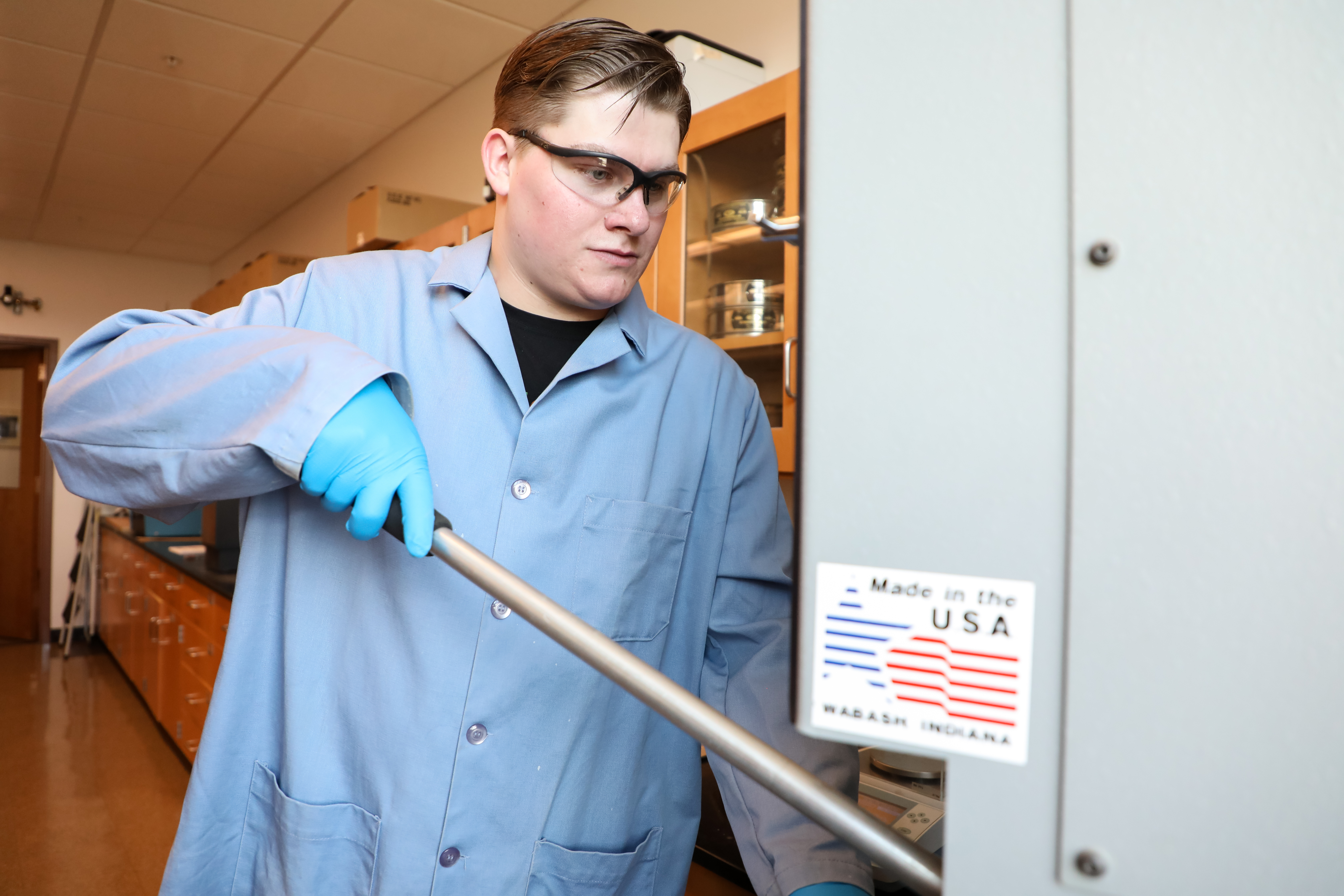Montana Tech Petroleum Engineering Graduate Student Works to Offset Carbon Emissions from Oil and Gas Wells

The United States Environmental Protection Agency estimates that 280,000 metric tons of the greenhouse gas methane are emitted from 2.15 million abandoned oil and gas wells each year. Methane is a greenhouse gas that affects atmospheric warming 30 times greater than that of carbon dioxide. A Montana Technological University graduate student is testing ways to reduce emissions from both orphan and operating well sites to help reduce the industry’s environmental impact.
Robb Braden, of Wibaux, MT, is a Petroleum Engineering student fully qualified to enter the energy sector when he graduates in 2023. Increasingly, however, prospective employers want to hear more from Braden about his master’s thesis project, which focuses on how to reduce the carbon footprint of petroleum extraction projects past and present.
“This research has the potential to aid in the process of capping orphaned oil and gas wells. It also could help decrease the carbon footprint of oil well cementing industry wide,” Assistant Professor Dr. Lee Richards said. “It also has the potential to provide an avenue to permanently sequester unwanted waste material.”
Braden’s project involves adding waste materials from other industries to cement. Cement is the source of 8% of the world’s carbon dioxide emissions. Every oil or natural gas well drilled involves massive amounts of cement used to encase the wellbore, to seal off underground formations and to plug the wells for good once they are finished producing. This use of cement drives the carbon footprint of a drilling project higher and higher. In an attempt to reduce that footprint, Braden has been adding hemp hurd, which is a byproduct of IND Hemp in Fort Benton, to the cement and testing its strength, how it flows, and how quickly it sets.
“There isn’t a large-scale industrial usage of this material right now,” Braden said of the hemp hurd.
In his research, Braden is also using non-recyclable plastic and biochar, a byproduct of forestry and agricultural wastes as potential additives. Biochar is 85 percent carbon by mass, so having it sequestered in the cement can be a significant offset for companies. By adding the plastic to the cement it both removes the refuse from the waste stream, and creates a significant amount of sequestered carbon.
“Certain plastics just can’t be recycled because of their characteristics and their chemical makeup,” Braden said. “Some examples of this include Saran wrap, the little six-pack rings, and plastic straws. When plastic is burned, which is the typical method of discarding plastic that isn’t recycled, it produces three pounds of carbon dioxide for every one pound of plastic that is incinerated.”
Energy companies can earn carbon credits by sequestering the carbon in the biochar, plastic and hemp hurd. At the same time, the cementing process requires less cement, further reducing emissions.
Braden has tested these hemp hurd enhanced cements in the field on wells near Shelby, on the state’s Hi-Line that were long-since abandoned. He interned with The Well Done Foundation, a Montana-based nonprofit that is endeavoring to plug abandoned oil and gas wells across the nation.
“Primarily what I’m doing is looking into the basic mechanical properties of the cement, and the different strengths,” Braden said.
Braden wants to find the maximum amount of additives that can be put into the cement while maintaining the structural integrity needed to support drilling or plugging operations.
A diverse set of companies can purchase carbon credits to help offset their total carbon footprint. Tito’s Vodka was recently a sponsor of a well plugged by the Well Done Foundation.
The companies benefit by reporting smaller carbon footprint, but there is some business sense to participate in carbon sequestration as well. More than 40 nations around the world have already implemented carbon taxes, and the proposal to implement similar policies in the United States has been a perennial political topic since 1990.
“I think if these companies want to get ahead of it, they need to start implementing projects like these,” Braden said.
Several industry professionals have wanted to learn more about Braden’s study of the additives, and he is taking that knowledge with him as he interns with a company in Oklahoma City this summer.
“I think this project is important because it shows all these different applications in the industry where if you put your mind to it, you can find these little niches where you can do good and you can decrease your net emission,” Braden said. “It’s so important nowadays that we find these better methods of doing operations.”
To arrange an interview or receive photos, please contact: Amanda Badovinac at abadovinac@mtech.edu or 406-496-4828.